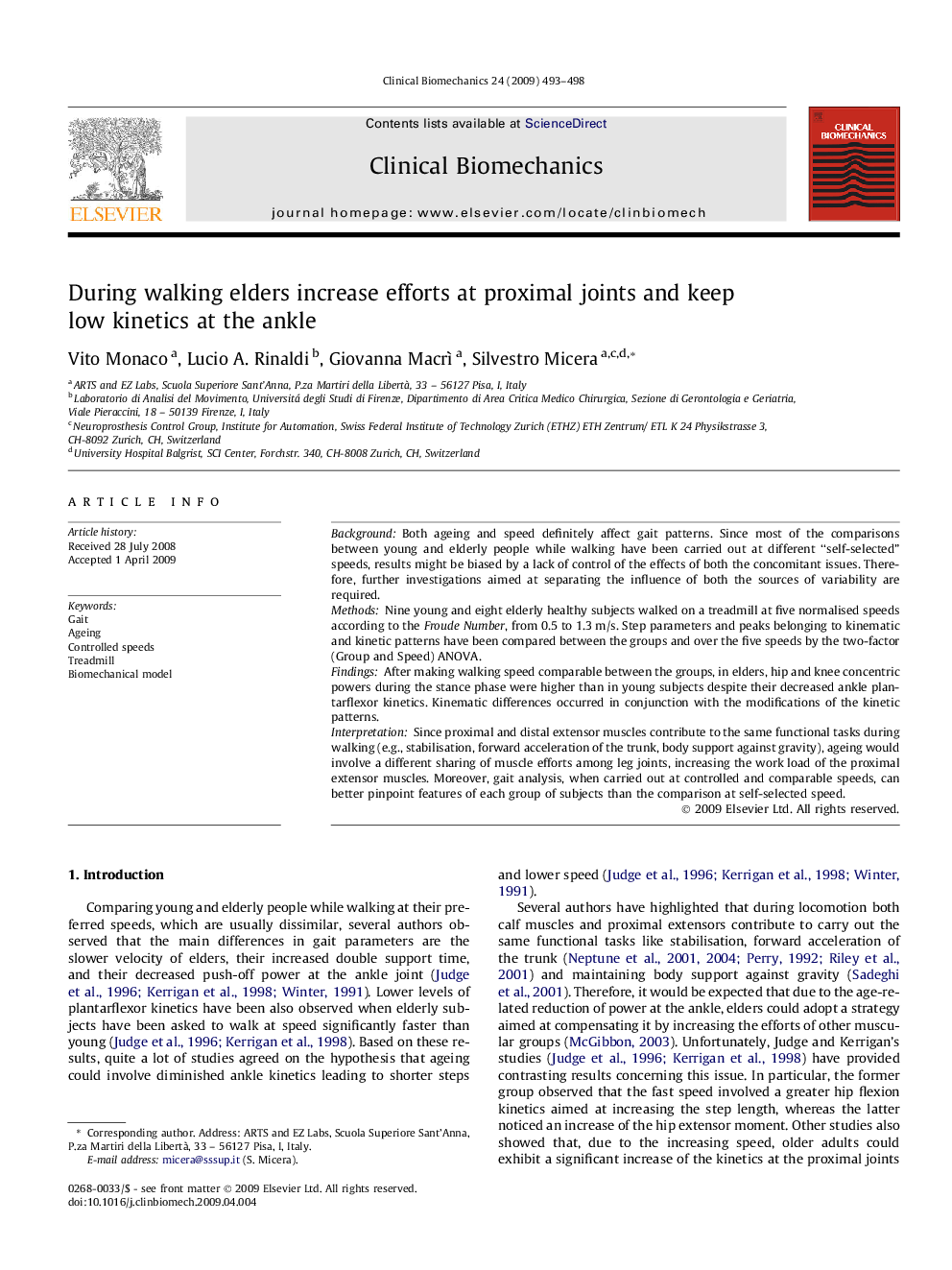| Article ID | Journal | Published Year | Pages | File Type |
|---|---|---|---|---|
| 4050761 | Clinical Biomechanics | 2009 | 6 Pages |
BackgroundBoth ageing and speed definitely affect gait patterns. Since most of the comparisons between young and elderly people while walking have been carried out at different “self-selected” speeds, results might be biased by a lack of control of the effects of both the concomitant issues. Therefore, further investigations aimed at separating the influence of both the sources of variability are required.MethodsNine young and eight elderly healthy subjects walked on a treadmill at five normalised speeds according to the Froude Number, from 0.5 to 1.3 m/s. Step parameters and peaks belonging to kinematic and kinetic patterns have been compared between the groups and over the five speeds by the two-factor (Group and Speed) ANOVA.FindingsAfter making walking speed comparable between the groups, in elders, hip and knee concentric powers during the stance phase were higher than in young subjects despite their decreased ankle plantarflexor kinetics. Kinematic differences occurred in conjunction with the modifications of the kinetic patterns.InterpretationSince proximal and distal extensor muscles contribute to the same functional tasks during walking (e.g., stabilisation, forward acceleration of the trunk, body support against gravity), ageing would involve a different sharing of muscle efforts among leg joints, increasing the work load of the proximal extensor muscles. Moreover, gait analysis, when carried out at controlled and comparable speeds, can better pinpoint features of each group of subjects than the comparison at self-selected speed.
